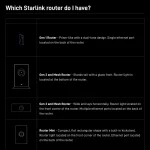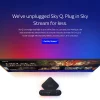Orkney 5G Trial Tests Li-Fi Wireless Broadband via Solar Panels
Now this really is unique. One of the Government funded 5G RuralFirst testbeds on Orkney (Scotland) appears to be delivering “high-speed” wireless broadband to a number of remote rural properties by using solar panels as receivers for a new Light Fidelity (LiFi) network (i.e. Li-Fi solar backhaul).
LiFi is a Visible Light Communication (VLC) based networking technology, which essentially delivers data by turning Light-Emitting Diode (LED) based light bulbs on and off at an incredible speed, which is too fast for you to notice with your own eyes (some LED bulbs already work like this in order to save energy).
At present LiFi is in the process of being turned into a ultrafast consumer home network product (here) and a related standard – 802.11bb – is already set for release in 2021. So far this sort of technology has largely only been used indoors but the new testbed on Orkney appears to be adopting an innovative twist.
Advertisement
Essentially one project under the £4.3m government funded and Cisco led 5G RuralFirst programme (original news) has installed equipment, including solar panels, on a lighthouse and the roofs of nearby houses on Graemsay (population of c.30) to test this method for providing backhaul capacity in remote locations.
In this setup the lighthouse acts as the central hub by sending a signal via infrared lasers (transmitters) over the last mile to nearby homes, which use their domestic solar panels as receivers (it’s not clear how the homes send their return signal back to the lighthouse). The homes then have an indoor Li-Fi network (we assume via ceiling lights), with USB dongles as network adapters for computers etc.
According to Computer Weekly and Harald Haas, CEO of pureLiFi and Director of the Li-FI R&D Centre at the University of Edinburgh, “Graemsay is the first location which harnesses ordinary solar panels as outdoor broadband detectors and ordinary LED lamps in homes as wireless access points.”
Dez O’Connor, 5G RuralFirst CTO, said:
“Li-Fi is a particularly sustainable solution to provide wireless connectivity and can be managed by residents themselves and combined with existing networks. As well as demonstrating the potential of advanced 5G technology to bridge the digital divide and better connect rural areas, 5G RuralFirst is trialling different technologies such as Li-Fi to solve the challenges posed by remote environments.”
Unfortunately we don’t yet have any crucial details about what the project is actually able to deliver, such as in terms of its cost, packages, backhaul speeds, distance / reach (signal degradation) and how it might handle houses that don’t have solar panels (such panels are usually south facing in order to catch plenty of sun and we imagine that in some areas this could be a limitation but clearly not here).
Advertisement
The viability of indoor Li-Fi is however a little more open to debate, although it’s early days. Such indoor networks would be more secure than WiFi (albeit still hackable through windows) and in theory they could be faster once the technology is refined (none of WiFi’s congested spectrum).
On the other hand spreading such a light signal around your home might be more costly (need for extra kit) and tedious to setup, plus you have to leave the lights on (albeit dimmed right down) in order to maintain the network.
The big question is whether or not the above trial is more viable than the more traditional Fixed Wireless Access (FWA) and WiFi approach to broadband delivery. Of course that’s why such trials are being conducted. You never know unless you.. trial 🙂 . I’ll get my coat.
The idea of using solar panels like this has actually been around for awhile and you can find some fun DIY videos on YouTube, which serve as a simplified but useful demonstration.
Advertisement
Credits to senivpetro for the solar panel image.
Mark is a professional technology writer, IT consultant and computer engineer from Dorset (England), he also founded ISPreview in 1999 and enjoys analysing the latest telecoms and broadband developments. Find me on X (Twitter), Mastodon, Facebook, BlueSky, Threads.net and Linkedin.
« TalkTalk UK ISP TV Advert Pulled Over Incorrect Speed Promotion
Three UK Upgrade HomeFi 4G Broadband Router with Huawei B535 »


















































Comments are closed